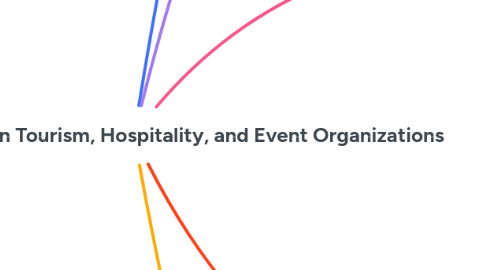
1. Human Resources Context
1.1. Labour Intensive Nature
1.1.1. THE sectors rely heavily on human labor rather than capital investment.
1.1.2. Staff play a crucial role in service delivery and guest satisfaction.
1.2. Strategic Resource Management
1.2.1. HR is a key asset for organizational success in service industries.
1.2.2. Efficient workforce planning and training improve business outcomes.
1.3. Cultural Impact on Organizations
1.3.1. Workplace culture affects employee motivation and service quality.
1.3.2. Different cultural expectations influence HR management approaches.
2. Importance of Human Resources
2.1. Key Differentiator in THE Industry
2.1.1. Employees provide a competitive advantage in service quality.
2.1.2. Well-trained staff enhance brand reputation and customer loyalty.
2.2. Impact on Service Quality
2.2.1. The quality of human resources directly affects guest satisfaction.
2.2.2. Employees act as the face of the organization in customer interactions.
2.3. Role in Organizational Success
2.3.1. HR is essential for maintaining operational efficiency and innovation.
2.3.2. Investment in HR leads to better employee retention and performance.
3. Employment and Working Conditions
3.1. High Staff Turnover
3.1.1. Frequent employee resignations increase recruitment and training costs.
3.1.2. Lack of career progression contributes to staff dissatisfaction.
3.2. Low Wages and Training Issues
3.2.1. Many jobs in THE sectors offer low pay and minimal job security.
3.2.2. Limited training programs affect service quality and employee performance.
3.3. Geographical and Cultural Factors
3.3.1. Labor supply varies across regions due to economic conditions.
3.3.2. Cultural differences influence work ethics and customer expectations.
3.4. Part-time and Seasonal Workers
3.4.1. Many employees work on a temporary or flexible basis.
3.4.2. Seasonal demand affects workforce stability and job security.
3.5. Recruitment Difficulties
3.5.1. Short-term employment makes attracting skilled workers challenging.
3.5.2. Language barriers and lack of specialized skills create hiring issues.
4. Service Quality and HR
4.1. Moments of Truth
4.1.1. Every interaction with a customer defines their perception of service.
4.1.2. Employees must be trained to handle key customer touchpoints effectively.
4.2. Customer Satisfaction
4.2.1. Service quality directly impacts guest satisfaction and repeat business.
4.2.2. Personalized experiences enhance customer loyalty.
4.3. Virtuous Cycle of Service Quality
4.3.1. Well-trained staff deliver high-quality service, leading to business success.
4.3.2. Success allows for further investment in employee development.
4.4. Training and Development
4.4.1. Continuous learning ensures employees adapt to industry changes.
4.4.2. Effective training programs improve service consistency and innovation.
4.5. Employee Engagement
4.5.1. Engaged employees are more productive and deliver better service.
4.5.2. Recognition and motivation programs enhance job satisfaction.
5. Guest-Employee Interaction
5.1. Empowerment Strategies
5.1.1. Giving employees decision-making power improves service efficiency.
5.1.2. Empowered staff can resolve customer issues promptly and effectively.
5.2. Customer Engagement
5.2.1. Strong relationships between staff and guests enhance the customer experience
5.2.2. Interactive and responsive service fosters brand loyalty.
5.3. Challenges in Service Encounters
5.3.1. Handling difficult customers requires strong communication skills.
5.3.2. Staff must manage high-pressure situations effectively.
5.4. Role of Frontline Staff
5.4.1. Frontline employees are the main point of contact with customers.
5.4.2. They need support and training to maintain service quality.
5.5. Personalized Service
5.5.1. Understanding customer preferences leads to tailored experiences.
5.5.2. Personalization increases guest satisfaction and positive reviews.
